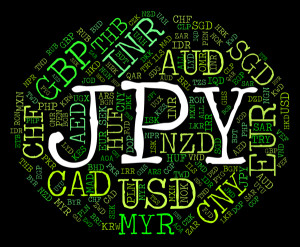
In the Bank of Japan’s (BoJ) case, it may be so, as Governor Kuroda and his fellow monetary policy members disappointed the market overnight with its modest stimulus package.
Of late, Kuroda has had a high probability of disappointing investors and last nights monetary policy announcement was no different.
The modest dose of stimulus delivered is perhaps a sign that the BoJ may be running up against the limits of monetary policy. Effectively, Kuroda and company have decided to kick the “can” down the road on deciding to implement further large-scale stimulus, allowing PM Abe’s government to do more heavy lifting with his fiscal plan instead.
Earlier this week, Abe announced a plan to spend as much as +¥28T ($354B) in economic stimulus, but leaked documents show that the final amount could be much lower and lacking a new strategy. Only time will tell.
1. BoJ announced more stimulus but underwhelms market expectations
The BoJ kept its key policy rate (IOFER) unchanged at -0.10% and maintained its annual monetary base target at +¥80T. Governor Kuroda has ordered an assessment of the effectiveness of their policy at the next meeting in September and reiterated that the BoJ would add more stimulus if necessary.
Nevertheless, they did ‘ease’ its policy further by expanding annual purchases of ETFs from +¥3.3T to +¥6.0T while doubling its USD lending program to +$24B.
Investors’ disappointment in the BoJ was reflected in the yen’s immediate advance against the U.S. dollar to sub ¥103.00 handle from its NY close north of ¥105.00.
In their quarterly forecasts, the BoJ saw inflation for the current year cut to +0.1% from +0.5%, but the next two-years were maintained at +1.7% and +1.9% respectively.
On growth, the current year was cut to +1.0% from +1.2%, but next year was raised dramatically to +1.3% from +0.1% – presumably in part to expected pause in Japan’s consumption tax increase.
Conclusion, the BoJ views the current monetary measures and the latest announced +€28T fiscal stimulus from PM Abe will have the needed impact to shock the economy. With yen at such lofty heights, FX traders currently do not seem to agree.
2. Stocks indicies mixed results
The BoJ’s moderate stimulus package has produced some mixed results in the final trading day of the week. Stateside, investors today will have to look towards the large number of earnings and data releases for support.
Ahead of the U.S open, Euro bourses are trading higher. Financial stocks seem to be supporting most of those gains after a plethora of banking earnings were announced pre-market. U.S. stock futures currently see red, as investors seem to be erring on the side of caution ahead of the this morning Q2 U.S. economic growth data release (08:30 EDT).
Disappointment over BoJ’s latest easing action is also weighing on sentiment.
Indices: Stoxx50 +0.3% at 2,983, FTSE flat at 6,722, DAX +0.6% at 10,336, CAC-40 +0.2% at 4,430, IBEX-35 +1.4% at 8,597, FTSE MIB +1.8% at 16,825, SMI +0.5% at 8,138, S&P 500 Futures -0.1%

3. Crude fails to get off “floor,” loses -7% this week
Oil prices have extended their recent slide this morning, as a deluge of oil and refined products in the market continue to weigh heavily, keeping prices near three-month lows.
Brent crude has fallen -1.4% to $42.12 a barrel, while WTI are trading down -1% at $40.75 a barrel.
“Black gold” would be trading lower, except a weaker dollar is providing some support.
Data this week continues to provide pressure – Wednesday’s EIA report revealed a surprise +1.7m uptick in U.S. crude stockpile, keeping total inventories at a historical high. Gasoline inventories rose by +500k barrels, also well above the upper limit of the average range.
Both oil benchmarks have lost nearly -7% this week so far, as a growing surplus of gasoline is not expected to move the needle on the markets supply ‘glut’ problem anytime soon.
Expect crude ‘bulls’ to get a tad more nervous if a weaker dollar does not provide crude price traction.

4. European banks stress tests
More than 50 European banks are expecting results for their stress tests from regulators this afternoon (4pm EDT). Some have already taken U.S stress tests, and the majority is expected to meet approval in Europe.
However, the EU examinations could mark the next step for the weakest among them to be either broken up or bailed out by their sovereign governments, Italian financial institutions in particular, as European banks are facing a far worse situation than those stateside factoring in the pain that’s expected ahead as a result of the U.K. Brexit vote.
There is no official pass or fail rate, but banks that don’t perform well may have to increase their capital buffers, either by selling shares or divesting assets.
Note, if it’s a disappointing report, Sunday’s Australasian open could lead to some risk aversion.

5. Atlanta Fed slashes GDP forecasts
Ahead of this morning’s U.S initial read on Q2 GDP, the Atlanta Fed’s forecasting tool puts growth at +1.8%, the lowest since early May. On Wednesday, the “GDPNow” forecast was at +2.3%. Market consensus estimates recently pointed to +2.6% GDP growth.
The Atlanta Fed’s forecasting tool, introduced in 2014, is widely watched by investors because it provides a “real-time” estimate on GDP data that is typically released with a lag.
If the Atlanta Fed were correct, the U.S’s H1 growth rate would average just +1.4% and +1.6% over the past four quarters. This would certainly justify why fixed income traders have been flattening the U.S yield curve, in other words, the U.S Treasury market is validating this slowing U.S growth trend.
Earlier this week, the Fed left the door open for a September rate hike, yet U.S Treasury’s rallied after the FOMC statement and interest-rate futures continue to show a low probability (+20%) of a U.S hike.
